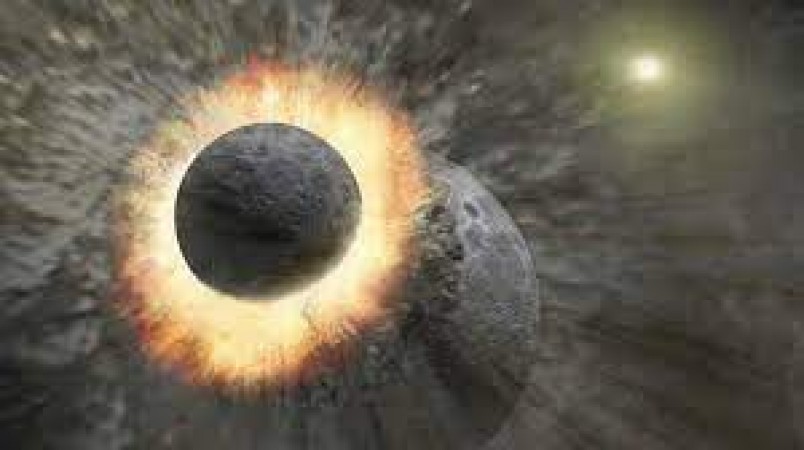
The moon, Earth's faithful companion in the night sky, has captivated humanity's imagination for eons. Its serene beauty and enigmatic presence have sparked countless myths, legends, and scientific inquiries. But where did the moon come from? How did this celestial body find its place in our cosmos? In this exploration, we will unravel the intriguing story behind the moon's origin.
The moon has been a source of wonder since time immemorial. Early civilizations, such as the ancient Greeks and Egyptians, crafted tales and deities inspired by its luminous presence. However, it wasn't until the advent of modern science that we began to truly comprehend the moon's origins.
One prevailing theory that has gained widespread acceptance is the Giant Impact Hypothesis. According to this hypothesis, the moon formed approximately 4.5 billion years ago when a Mars-sized celestial body, often referred to as "Theia," collided with the young Earth.
Imagine a colossal cosmic collision, where two massive bodies collided with such force that the impact was cataclysmic. The energy released in this collision was of an unimaginable scale, leading to the ejection of debris into space.
As the debris from this cosmic collision scattered into space, it eventually coalesced to form what we now know as the moon. This process of accretion involved countless small fragments coming together over millions of years due to gravitational forces.
Understanding the moon's composition provides valuable insights into its origin. The moon is primarily composed of silicate rock, much like Earth's mantle. However, it lacks a significant iron core, which is a characteristic feature of our planet.
Apollo missions to the moon in the late 1960s and early 1970s brought back samples of lunar rocks and regolith. Analysis of these samples confirmed the moon's composition and its resemblance to Earth's mantle.
Another compelling piece of evidence supporting the Giant Impact Hypothesis is the isotopic composition of moon rocks. Isotopes are variants of chemical elements, and the moon's isotopic ratios closely resemble those of Earth, providing further confirmation of a common origin.
While the Giant Impact Hypothesis is widely accepted, alternative theories about the moon's origin continue to be explored. Some propose scenarios involving capture of the moon by Earth's gravity, but these ideas face significant challenges in explaining the moon's composition and angular momentum.
Over billions of years, the moon has undergone numerous changes. Its surface bears witness to the impacts of countless asteroids and comets, creating the lunar craters and maria we see today.
The moon has played a crucial role in shaping Earth's environment. Its gravitational pull is responsible for the tides, which have influenced the evolution of life in coastal ecosystems. Additionally, the moon's presence stabilizes Earth's axial tilt, ensuring the stability of our climate over geological time scales. The moon's origin is a story of celestial collisions, cosmic debris, and the mysterious dance of gravitational forces. While the Giant Impact Hypothesis remains the leading explanation for the moon's birth, it is a testament to human curiosity and scientific ingenuity that we continue to explore and unravel the mysteries of our celestial neighbor.
Tonga's Volcanic Outburst Sets Record-breaking Ocean Flows in Motion
Five Quick Tips for Drying Nail Polish
G20 Summit: US President Biden Arrives in Delhi for Bilateral Meeting with PM Modi